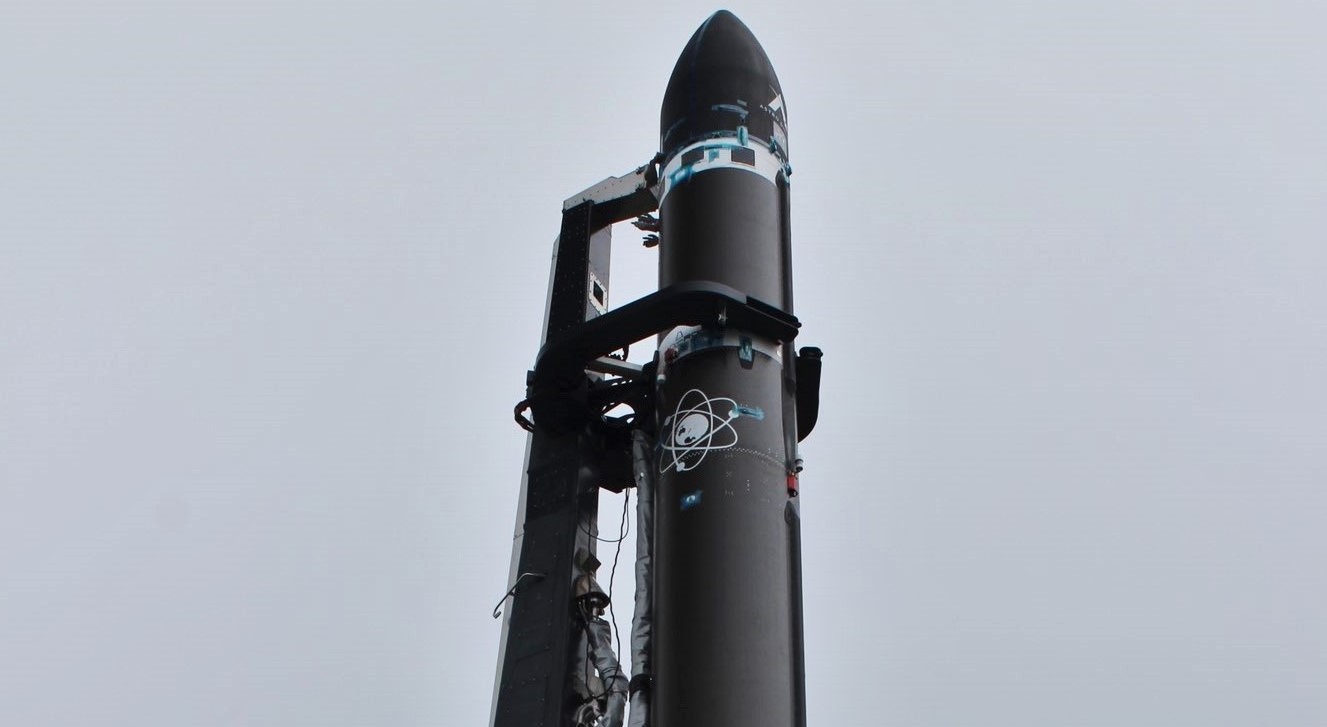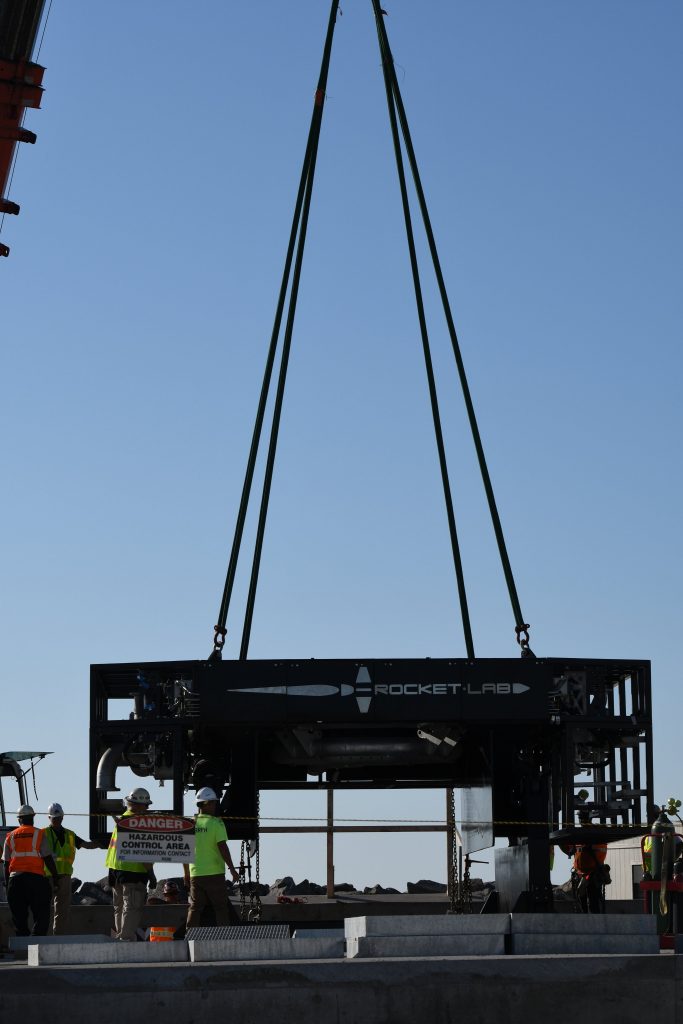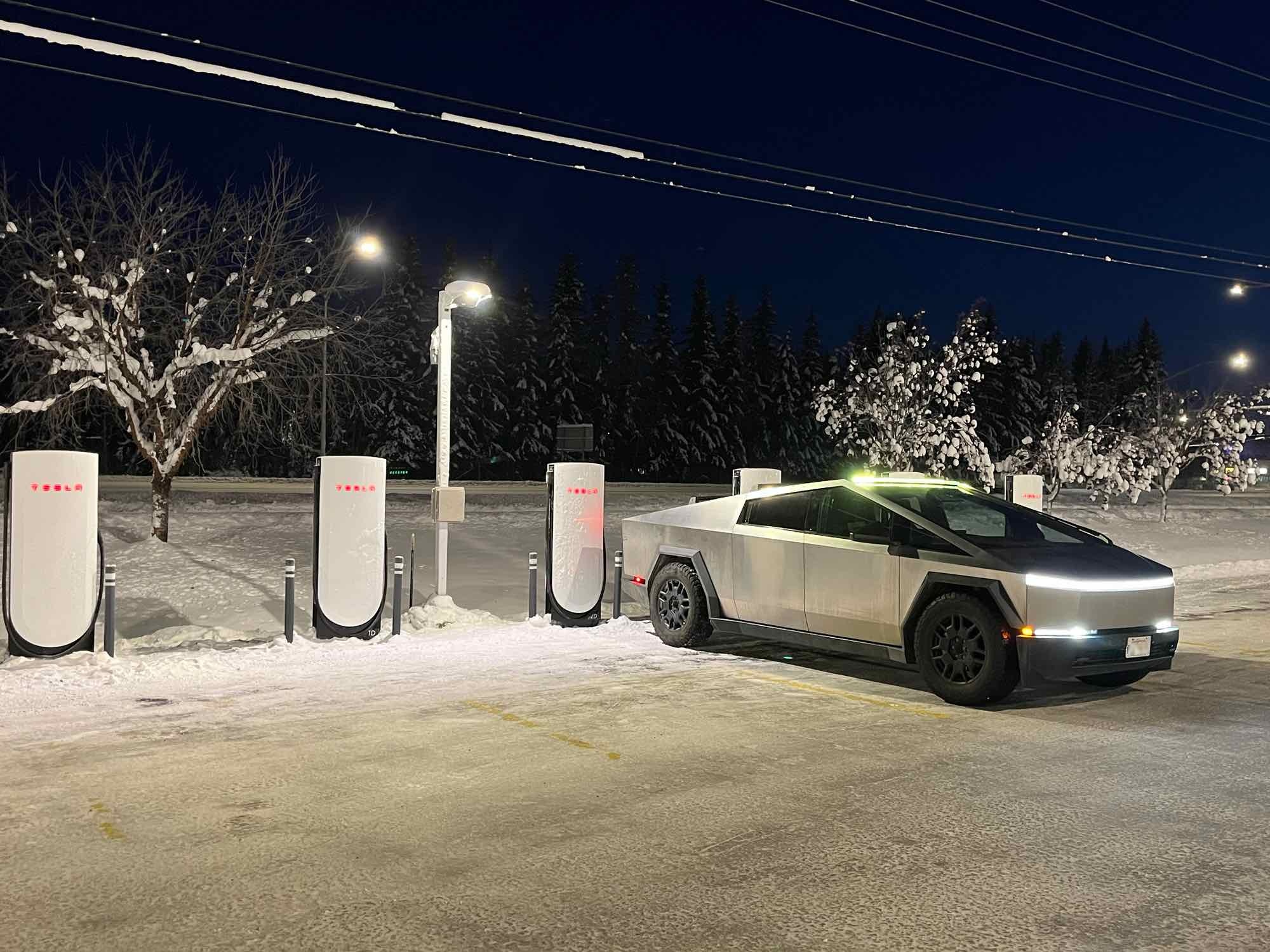

News
Rocket Lab set for Electron’s 9th launch as work continues on reusability, new US launch pad
Over the last several weeks, US spaceflight company Rocket Lab has posted major updates about its ongoing work on LC-2 – the company’s second orbital launch complex – and offered a number of glimpses behind the scenes of preparations for Electron’s 9th orbital launch attempt.
That attempt will be streamed by Rocket Lab and could occur as early as October 17th, delayed from the 15th due to unfavorable weather conditions.
Prior to announcing booster recovery efforts – much like SpaceX and the Falcon 9 – the company broke ground on their first US-based launch facility, to be located at the Mid-Atlantic Regional Spaceport in Wallops Island, Virginia. Launch Complex 2 (LC-2) will join the company’s lone orbital Launch Complex 1 (LC-1) – New Zealand’s first and only orbital launch site – and is meant to enable Rocket Lab to eventually reach a biweekly-to-weekly launch cadence with Electron.
In a statement posted to the company’s social media accounts, Rocket Lab proudly announced that it is working alongside Virginia Space teams to construct LC-2 and its associated Integration and Control Facilities. The future pad recently reached a major milestone as workers installed LC-2’s 66-ton Electron launch platform, to be followed soon after by the installation of the mount’s 44 foot tall (13.4m) strongback, itself weighing 7.6 tons. This marks the beginning of the end of construction efforts at the complex and Rocket Lab is still working towards completion sometime in December 2019. Inaugural pad testing and shakedown operations are expected to begin immediately after, followed by LC-2’s first Electron launch sometime in early 2020.

The US launch facilities will closely resemble Rocket Lab’s New Zealand pad both in appearance and operation: Electron will be rolled horizontally to the launch mount to be lifted vertical after installation on the strongback. A high-pressure water deluge system will protect the mount from Electron and deaden some of the acoustic energy created by the booster.
Mahia Peninsula, New Zealand 2017 (Rocket Lab)
Although Rocket Lab is an American company headquartered in Huntington, CA, it has never launched from the United States. The addition of a second launch complex is expected to drastically increase Electron’s launch cadence, while also lowering the burden placed on companies who would otherwise have to transport spacecraft internationally. In a statement, David Pierce – director of NASA Goddard Space Flight Center’s Wallop Flight Facility – said that “the company’s Electron rocket helps fill a key national need for providing more – and more frequent – launch opportunities for small satellites, and NASA’s Launch Range at GSFC/Wallops, which has enabled commercial space operations for decades, is poised and ready to support these missions.”
Rocket Lab previously worked with NASA to support the Educational Launch of Nanosatellites (ELaNa)-19 mission in December of 2018. So far, Rocket Lab has supported many small companies by launching a total of 39 satellites to orbit. A launch facility located in the US will allow the company to expand its customer base and open up opportunities for more US government launch contracts.
The new US-based launch facility will allow Rocket Lab to expand its employee roster by hiring up to 30 new team members in positions supportive of launch operations including engineering, launch safety, and administration. Launch Complex 2 has been certified to fly Electron up to 12 times a year – specifically supporting government contracts – while Launch Complex 1 in New Zealand has been certified for up to 120 launches per year.
Electron’s 9th launch – nicknamed “As the Crow Flies” – is scheduled for liftoff no earlier than (NET) October 15th and will be a dedicated commercial mission for startup Astro Digital. It will serve as an orbital launch attempt for Astro’s “Corvus” satellite bus and will test the world’s most powerful small electric propulsion system. In a recent blog post, Rocket Lab Senior Vice President of Global Launch Services Lars Hoffman stated that “the mission is a perfect example of the tailored, responsive and precise launch service sought by an increasing number of small satellite operators.”
On October 4th, the 9th flight-qualified Electron rocket completed a routine wet dress rehearsal (WDR) – loading the vehicle with propellant and counting down to launch (sans ignition) – at LC-1. A few days later, Astro Digital’s spacecraft was integrated with a Curie-powered kick stage and encapsulated inside Electron’s carbon fiber payload fairing.
As of now, everything is smoothly on track for Electron’s ninth launch. Of note, the Flight 9 Electron booster is outfitted with a new telemetry system designed to gather a huge amount of data about the reentry environment the booster experiences, data that will be used to reinforce the booster and prepare for its first recovery attempts.
Due to the volume of data that will be produced, Electron will quite literally eject small data capsules that will then be recovered by boat in the Pacific Ocean. If all goes well and the data returned looks promising, Rocket Lab could attempt its first Electron recoveries – nominally grabbing the parasailing booster mid-air with a helicopter – at some point in early 2020.
Check out Teslarati’s newsletters for prompt updates, on-the-ground perspectives, and unique glimpses of SpaceX’s rocket launch and recovery processes.

Cybertruck
Tesla updates Cybertruck owners about key Powershare feature

Tesla is updating Cybertruck owners on its timeline of a massive feature that has yet to ship: Powershare with Powerwall.
Powershare is a bidirectional charging feature exclusive to Cybertruck, which allows the vehicle’s battery to act as a portable power source for homes, appliances, tools, other EVs, and more. It was announced in late 2023 as part of Tesla’s push into vehicle-to-everything energy sharing, and acting as a giant portable charger is the main advantage, as it can provide backup power during outages.
Cybertruck’s Powershare system supports both vehicle-to-load (V2L) and vehicle-to-home (V2H), making it flexible and well-rounded for a variety of applications.
However, even though the feature was promised with Cybertruck, it has yet to be shipped to vehicles. Tesla communicated with owners through email recently regarding Powershare with Powerwall, which essentially has the pickup act as an extended battery.
Powerwall discharge would be prioritized before tapping into the truck’s larger pack.
However, Tesla is still working on getting the feature out to owners, an email said:
“We’re writing to let you know that the Powershare with Powerwall feature is still in development and is now scheduled for release in mid-2026.
This new release date gives us additional time to design and test this feature, ensuring its ability to communicate and optimize energy sharing between your vehicle and many configurations and generations of Powerwall. We are also using this time to develop additional Powershare features that will help us continue to accelerate the world’s transition to sustainable energy.”
Owners have expressed some real disappointment in Tesla’s continuous delays in releasing the feature, as it was expected to be released by late 2024, but now has been pushed back several times to mid-2026, according to the email.
Foundation Series Cybertruck buyers paid extra, expecting the feature to be rolled out with their vehicle upon pickup.
Cybertruck’s Lead Engineer, Wes Morrill, even commented on the holdup:
As a Cybertruck owner who also has Powerwall, I empathize with the disappointed comments.
To their credit, the team has delivered powershare functionality to Cybertruck customers who otherwise have no backup with development of the powershare gateway. As well as those with solar…
— Wes (@wmorrill3) December 12, 2025
He said that “it turned out to be much harder than anticipated to make powershare work seamlessly with existing Powerwalls through existing wall connectors. Two grid-forming devices need to negotiate who will form and who will follow, depending on the state of charge of each, and they need to do this without a network and through multiple generations of hardware, and test and validate this process through rigorous certifications to ensure grid safety.”
It’s nice to see the transparency, but it is justified for some Cybertruck owners to feel like they’ve been bait-and-switched.
News
Tesla’s northernmost Supercharger in North America opens

Tesla has opened its northernmost Supercharger in Fairbanks, Alaska, with eight V4 stalls located in one of the most frigid cities in the U.S.
Located just 196 miles from the Arctic Circle, Fairbanks’s average temperature for the week was around -12 degrees Fahrenheit. However, there are plenty of Tesla owners in Alaska who have been waiting for more charging options out in public.
There are only 36 total Supercharger stalls in Alaska, despite being the largest state in the U.S.
Eight Superchargers were added to Fairbanks, which will eventually be a 48-stall station. Tesla announced its activation today:
North America’s northernmost Supercharger Fairbanks, AK (8 stalls) opened to public. https://t.co/M4l04DZ6B5 pic.twitter.com/zyL6bDuA93
— Tesla Charging (@TeslaCharging) December 12, 2025
The base price per kWh is $0.43 at the Fairbanks Supercharger. Thanks to its V4 capabilities, it can charge at speeds up to 325 kW.
Despite being the northernmost Supercharger in North America, it is not even in the Top 5 northernmost Superchargers globally, because Alaska is south of Norway. The northernmost Supercharger is in Honningsvåg, Norway. All of the Top 5 are in the Scandanavian country.
Tesla’s Supercharger expansion in 2025 has been impressive, and although it experienced some early-quarter slowdowns due to V3-to-V4 hardware transitions, it has been the company’s strongest year for deployments.
🚨🚨 Tesla Supercharging had a HUGE year, and they deserve to be recognized.
🍔 Opened Tesla Diner, a drive-in movie theater with awesome, Chef-curated cuisine
🔌 Gave access to Superchargers to several EV makers, including Hyundai, Genesis, Mercedes-Benz, Kia, Lucid, Toyota,… pic.twitter.com/yYT2QEbqoW
— TESLARATI (@Teslarati) December 10, 2025
Through the three quarters of 2025, the company has added 7,753 stations and 73,817 stalls across the world, a 16 percent increase in stations and an 18 percent increase in stalls compared to last year.
Tesla is on track to add over 12,000 stalls for the full year, achieving an average of one new stall every hour, an impressive statistic.
Recently, the company wrapped up construction at its Supercharger Oasis in Lost Hills, California, a 168-stall Supercharger that Tesla Solar Panels completely power. It is the largest Supercharger in the world.
News
Tesla shocks with latest Robotaxi testing move
Why Tesla has chosen to use a couple of Model S units must have a reason; the company is calculated in its engineering and data collection efforts, so this is definitely more than “we just felt like giving our drivers a change of scenery.”

Tesla Model S vehicles were spotted performing validation testing with LiDAR rigs in California today, a pretty big switch-up compared to what we are used to seeing on the roads.
Tesla utilizes the Model Y crossover for its Robotaxi fleet. It is adequately sized, the most popular vehicle in its lineup, and is suitable for a wide variety of applications. It provides enough luxury for a single rider, but enough room for several passengers, if needed.
However, the testing has seemingly expanded to one of Tesla’s premium flagship offerings, as the Model S was spotted with the validation equipment that is seen entirely with Model Y vehicles. We have written several articles on Robotaxi testing mules being spotted across the United States, but this is a first:
🚨 Tesla is using Model S vehicles fitted with LiDAR rigs to validate FSD and Robotaxi, differing from the Model Ys that it uses typically
Those Model Y vehicles have been on the East Coast for some time. These Model S cars were spotted in California https://t.co/CN9Bw5Wma8 pic.twitter.com/UE55hx5mdd
— TESLARATI (@Teslarati) December 11, 2025
Why Tesla has chosen to use a couple of Model S units must have a reason; the company is calculated in its engineering and data collection efforts, so this is definitely more than “we just felt like giving our drivers a change of scenery.”
It seems to hint that Tesla could add a premium, more luxury offering to its Robotaxi platform eventually. Think about it: Uber has Uber Black, Lyft has Lyft Black. These vehicles and services are associated with a more premium cost as they combine luxury models with more catered transportation options.
Tesla could be testing the waters here, and it could be thinking of adding the Model S to its fleet of ride-hailing vehicles.
Reluctant to remove the Model S from its production plans completely despite its low volume contributions to the overall mission of transitioning the world to sustainable energy, the flagship sedan has always meant something. CEO Elon Musk referred to it, along with its sibling Model X, as continuing on production lines due to “sentimental reasons.”
However, its purpose might have been expanded to justify keeping it around, and why not? It is a cozy, premium offering, and it would be great for those who want a little more luxury and are willing to pay a few extra dollars.
Of course, none of this is even close to confirmed. However, it is reasonable to speculate that the Model S could be a potential addition to the Robotaxi fleet. It’s capable of all the same things the Model Y is, but with more luxuriousness, and it could be the perfect addition to the futuristic fleet.








